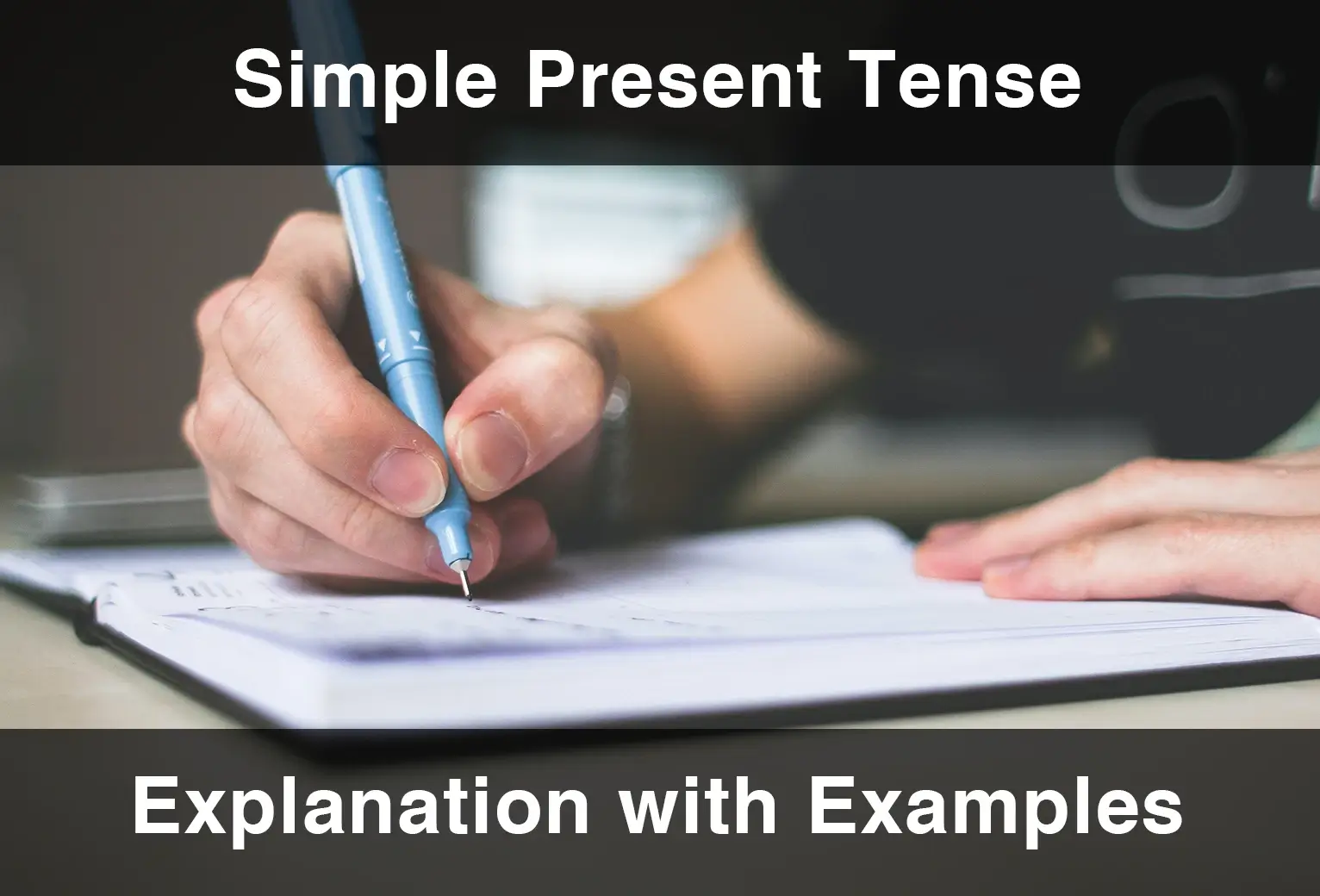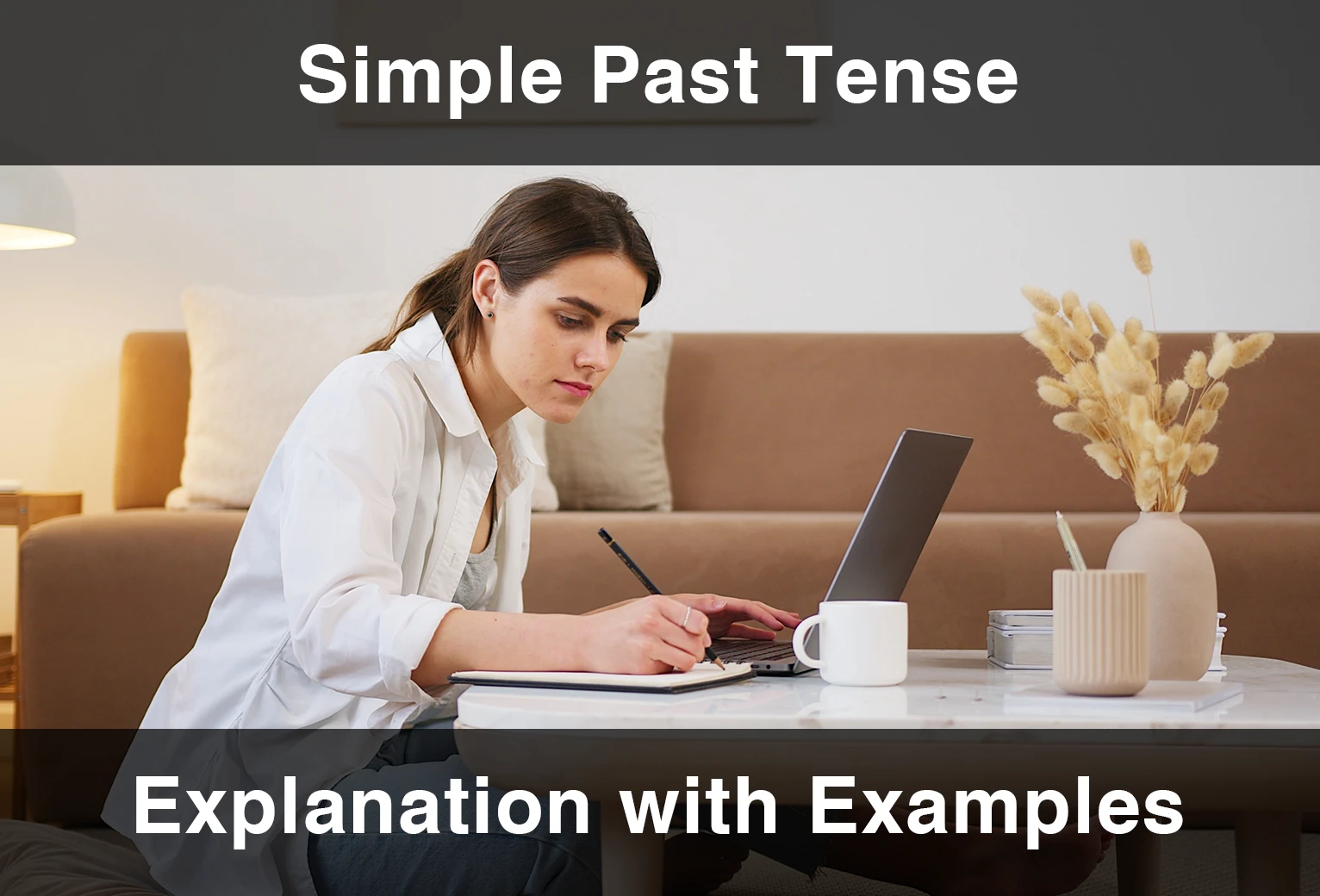The present continuous tense, also known as the present progressive tense, is an essential aspect of English grammar. It is used to describe actions that are happening at the present moment or around the current time. Whether you’re a beginner or simply looking for a refresher, understanding how to construct present continuous sentences is crucial for effective communication. In this blog post, we will provide you with a detailed guide on constructing present continuous sentences.
What is the Present Continuous Tense?
The Present Continuous tense, also known as the Present Progressive tense, is used to describe actions that are happening at the present moment, ongoing actions, temporary situations, or plans in progress. It emphasizes the action’s temporary nature and indicates that it is occurring around the time of speaking.
What are Present Continuous Tense Grammar Rules?
The Present Continuous tense can be used to create positive and negative sentences or a question sentence (interrogative sentence).
Forming the Present Continuous Tense:
The Present Continuous tense is formed using the present tense of the verb “to be” (am, is, are) followed by the present participle (-ing form) of the main verb. Use “am” with the first-person singular pronoun “I,” “is” with the third-person singular pronouns “he,” “she,” “it,” and “are” with all other pronouns (you, we, they). The structure is:
Subject + am/is/are + present participle (-ing form of the verb)
For example:
She is studying for her exam.
They are playing soccer in the park.
I am working on a project.
Forming Negative Sentences:
To form negative sentences in the Present Continuous tense, use the negative form of the verb “to be” (am not, is not, are not) followed by the present participle (-ing form) of the main verb.
Examples:
She is not studying for her exam.
They are not playing soccer.
Asking Questions:
To ask questions in the Present Continuous tense, invert the subject and the form of the verb “to be.” Begin the sentence with the appropriate form of “to be,” followed by the subject and the present participle (-ing form) of the main verb.
Examples:
Is she studying for her exam?
Are they playing soccer?
Structuring Sentences with Present Continuous Tense
The present continuous tense is used to describe an action that is happening now or is currently in progress. To structure sentences with the present continuous tense, we need to follow this simple formula:
Subject (He, She, It, I, You, We, They) + Auxiliary Verb (am, is, are) + Main Verb (-ing)
Subject: We begin the sentence with the subject (the person or thing performing the action).
Auxiliary Verb: We use the correct form of the auxiliary verb “be” (am, is, are) considering the subject.
Main Verb: We add the main verb in its “-ing” form.
Present Continuous Tense Positive Sentences
Positive sentences in the present continuous tense describe ongoing actions or activities that were happening in the present. Here’s an explanation of how to form positive sentences in the simple present continuous tense:
We begin with the subject (the person or thing performing the action).
We use the correct form of the auxiliary verb “be” (am, is, are) based on the subject.
Add the main verb in its “-ing” form.
To structure sentences with the present continuous tense, we need to follow this simple formula:
Subject (He, She, It, I, You, We, They) + Auxiliary Verb (am, is, are) + Main Verb (-ing)
For example:
He (Subject) + is (auxiliary verb) + going (verb+ -ing) to school.
Positive Sentences:
| Subject | Auxiliary Verb | Main Verb (-ing form) |
|---|---|---|
| I | Am, is, are | Verb + -ing |
| You | Am, is, are | Verb + -ing |
| We | Am, is, are | Verb + -ing |
| They | Am, is, are | Verb + -ing |
| He | Am, is, are | Verb + -ing |
| She | Am, is, are | Verb + -ing |
| It | Am, is, are | Verb + -ing |
Here are some examples of positive sentences in the simple present continuous tense:
The children are sleeping.
The bird is singing.
It is snowing outside.
The team is practicing for the match.
The teacher is explaining the rules.
I am playing video games right now.
They are singing a song.
She is looking out the window.
He is searching for a job.
Present Continuous Tense Negative Sentences
Things are not always positive, right? If you need to talk about negative actions, all you need to do is to add the word “not” before the present participle and then you can form negative sentences. Negative sentence examples in the simple present continuous tense express the absence of ongoing actions.
We begin with the subject (the person or thing performing the action).
We use the correct form of the auxiliary verb “be” (am not, is not, are not) based on the subject.
We add “not” after the auxiliary verb.
Lastly, we add the main verb in its “-ing” form.
To structure sentences with the present continuous tense, we need to follow this simple formula:
Subject (He, She, It, I, You, We, They) + Auxiliary Verb (am, is, are) + Not + Main Verb (-ing)
For example:
She (Subject) + is (Auxiliary verb) + not + coming (Main verb + -ing).
Negative Sentences
| Subject | Auxiliary Verb | Negative Adverb | Main Verb (-ing form) |
|---|---|---|---|
| I | Am, is, are | Not | Verb + -ing |
| You | Am, is, are | Not | Verb + -ing |
| We | Am, is, are | Not | Verb + -ing |
| They | Am, is, are | Not | Verb + -ing |
| He | Am, is, are | Not | Verb + -ing |
| She | Am, is, are | Not | Verb + -ing |
| It | Am, is, are | Not | Verb + -ing |
Here are some examples of negative sentences in the simple present continuous tense:
I’m not listening to music.
You aren’t listening to me.
He isn’t reading at the moment.
She isn’t working
It is not raining outside.
I am not working right now
He is not talking about me.
They are not walking.
We are not singing.
You aren’t flying.
Present Continuous Tense Positive Interrogative Sentences
We form interrogative sentences in the simple present continuous tense in order to ask questions about ongoing actions or activities happening in the present. These questions are neutral questions as they are not necessarily negative or positive. Here’s an explanation of how to form interrogative sentences in the simple present continuous tense:
We begin the sentence with the appropriate form of the auxiliary verb “be” (am, is, are) according to the subject.
We use the correct subject after the auxiliary verb.
We finish with the main verb in its “-ing” form after the subject.
To structure interrogative sentences with the present continuous tense, we need to follow this simple formula:
Auxiliary Verb(am, is, are) + Subject (He, She, It, I, You, We, They) + Main Verb (-ing)
For example:
Are (Auxiliary verb) + you (Subject) + listening (Main verb + -ing) ?
Interrogative Sentences
| Auxiliary Verb | Subject | Main Verb (-ing form) |
|---|---|---|
| Am, is, are | I | Verb + -ing |
| Am, is, are | You | Verb + -ing |
| Am, is, are | We | Verb + -ing |
| Am, is, are | They | Verb + -ing |
| Am, is, are | He | Verb + -ing |
| Am, is, are | She | Verb + -ing |
| Am, is, are | It | Verb + -ing |
Here are some examples of interrogative sentences in the present continuous tense:
Are we going to the cinema this weekend ?
Is the dog barking at us ?
Are the children playing outside ?
Is it snowing outside ?
Are the children arriving soon ?
Are you reading a book right now ?
Is she calling the cops ?
Am I thinking in a healthy way ?
Are they surfing ?
Are we arguing loudly ?
In each example, the auxiliary verb “be” (am, is, are) is used at the beginning of the sentence, followed by the subject and the main verb in its “-ing” form. These questions are aimed to inquire about ongoing actions or activities in the present. The question mark at the end indicates that it is an interrogative sentence.
Present Continuous Tense Negative-Interrogative Sentences
When writing a negative-interrogative sentence in the present continuous tense, we need to follow this simple formula: Am/Is/Are + Not + Subject + Verb + ing + Object?
For example:
Are (Auxiliary verb) + not + they (Subject) + playing (Verb+ -ing) tennis right now? (Object)
| Auxiliary Verb | Negative Adverb | Subject | Verb | Complement |
|---|---|---|---|---|
| Am, is, are | Not | I | Verb + -ing | Object |
| Am, is, are | Not | You | Verb + -ing | Object |
| Am, is, are | Not | We | Verb + -ing | Object |
| Am, is, are | Not | They | Verb + -ing | Object |
| Am, is, are | Not | He | Verb + -ing | Object |
| Am, is, are | Not | She | Verb + -ing | Object |
| Am, is, are | Not | It | Verb + -ing | Object |
Here are some examples of negative-interrogative sentences in the present continuous tense:
Aren’t you eating breakfast?
Isn’t she studying for her exams?
Aren’t they playing football?
Is she not watching a movie in the theater?
Is it not raining cats and dogs?
Are we not playing in the park?
Are they not cooking?
Aren’t they changing right now?
Isn’t he coming close?
Short answers in Present Continuous Tense
Positive Answers:
| Confirmation word | Subject | Auxiliary Verb |
|---|---|---|
| Yes, | I | Am, is, are |
| Yes, | You | Am, is, are |
| Yes, | We | Am, is, are |
| Yes, | They | Am, is, are |
| Yes, | He | Am, is, are |
| Yes, | She | Am, is, are |
| Yes, | It | Am, is, are |
Negative answers:
| Denial word | Subject | Auxiliary Verb |
|---|---|---|
| No, | I | Am, is, are + NOT |
| No, | You | Am, is, are + NOT |
| No, | We | Am, is, are + NOT |
| No, | They | Am, is, are + NOT |
| No, | He | Am, is, are + NOT |
| No, | She | Am, is, are + NOT |
| No, | It | Am, is, are + NOT |
Wh- questions in Present Continuous Tense
To form a wh-question in the present continuous tense, we use the auxiliary verb “be” (am/is/are) followed by the subject and the present participle (-ing form) of the main verb.
When writing a Wh- question sentence in the present continuous tense, we need to follow this simple formula:
Wh-question word + auxiliary verb “be” + subject + (-ing form) of the main verb
For example: Where (Wh- question) + am (Auxiliary verb) + I (Subject) + going?
| Wh- question | Auxiliary Verb | Subject | Verb |
|---|---|---|---|
| Who | Am, is, are | I | Verb + -ing |
| Whose | Am, is, are | You | Verb + -ing |
| Which | Am, is, are | We | Verb + -ing |
| Where | Am, is, are | They | Verb + -ing |
| What | Am, is, are | He | Verb + -ing |
| Why | Am, is, are | She | Verb + -ing |
| When | Am, is, are | It | Verb + -ing |
| How | Am, is, are | Verb + -ing |
Here are some examples of Wh- question sentences in the present continuous tense:
What are you doing?
Where is he going?
Why are they laughing?
Who is she talking to?
When are they leaving?
Usage of Present Continuous Tense in Different Occasions
The present continuous tense can be used to talk about actions or events that are happening at the moment of speaking. For example:
She is practicing the songs for her shows. (This means that she is in the process of practicing for her shows at the moment of speaking.)
I am coding on my computer. (This means that I am currently performing the action of coding on my computer at the moment of speaking.)
They are watching a TV show. (This means that they are currently watching a TV show while the speaker is telling us about it.)
However the present continuous tense can also be used to talk about actions or events that are not necessarily happening at the moment, but for the actions or events that are happening these days or in the near future.
I am buying a new car this week. (This means that the speaker is not currently buying a car at the time of speaking, but is going to buy it during this week or in the near future)
She is thinking about breaking up with her boyfriend. (This means that she is considering breaking up with her boyfriend in the near future.)
Even though it might be tricky to remember, the present continuous tense is also widely used to talk about future events that have already been planned.
We are meeting our friends for a party tonight. (This means that the speaker and their friends have already made plans to meet for a party tonight.)
Is she meeting with us this week? (This question signals that the speaker and their friends have already made plans to meet with a lady this week.)
I am not going to work next week.(This means that the speaker has already made plans to not work next week.)
They aren’t leaving for Japan until 9 o’clock. (This means that the their flight to Japan is scheduled for 9 o’clock)
We are driving with friends to get to Los Angeles. (This means that the speaker and their friends have already made plans to get to Los Angeles by driving.)
Overall, it can be said that the present continuous tense is a useful tool for describing actions or events that are happening right now, or around the time of speaking or writing. Even though mostly known for its function that lets us talk about events that occur in the time of speaking, it is also extremely useful when talking about events that are planned for the future. By understanding how to use this tense correctly, you can communicate more clearly and express yourself easily in English.
The Adverbs of Time That Are Used in Present Continuous Tense:
Adverbs of time state the period of time that the action of the sentence occurs. In the present continuous tense, adverbs of time are usually placed at the end of the sentence. The adverbs of time that are often used are:
Now,
At the moment,
Currently,
Today,
This week,
This month,
This year,
At present,
Right now,
Nowadays.
Here are some example sentences that are formed with adverbs of time:
I am studying now.
She is working at the moment.
They are currently watching a movie.
He is playing tennis today.
We are traveling this week.
Frequently Asked Questions About Present Continuous Tense
What is the Present Continuous Tense and when is it used?
The Present Continuous Tense, is also known as the Present Progressive Tense. It is used to describe actions that are currently happening at the moment of speaking or around the current time period. In sentences formed with the present continuous tense, the auxiliary verb “to be” in the present tense (am, is, are) is followed by the present participle (-ing) form of the main verb.
Can the Present Continuous Tense be used for future actions?
Yes, we can use the Present Continuous Tense to talk about future plans such as weddings, parties, vacations, meetings, etc.
Are there any irregular verbs in the Present Continuous Tense?
No, there are no irregular verbs in the Present Continuous Tense. Luckily, all verbs are regular in the Present Continuous tense as they follow the same pattern of adding “-ing” to the base form of the verb.
How can I tell the difference between the Present Continuous and the Simple Present Tense?
In order to talk about or describe general habits, routines, or facts we should use the Present Simple tense. However, the Present Continuous Tense is used to describe actions that are currently happening or ongoing.
Would you like to put what you have learned into practice? You can access everything you need to learn English on a single platform! With 25-minute one-on-one live English lessons, 40-minute group lessons, more than 30,000 interactive videos, vocabulary learning tools, AI-supported tutor MiMi, quizzes, and interactive activities, EnglishCentral offers its users a personalized and quality education plan at an affordable price. How about registering for EnglishCentral now and starting to learn English?











